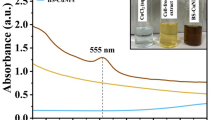Abstract
The study of the dose–response relationship of disinfectants is of great importance in treating infection, the objective being to use concentrations above the minimal bactericidal concentration (MBC). Below these concentrations, the bacteriostatic or bactericidal effect may be insufficient. Moreover, at low concentrations, a hormetic effect may be observed, producing a stimulation of growth instead of inhibitory action. Hormesis is not well known in the context of antimicrobial substances. This study investigates the possible existence of a hormetic effect in three commonly used antiseptics—chlorhexidine digluconate, povidone iodine and benzalkonium chloride—on strains of reference of Staphylococcus aureus and Pseudomonas aeruginosa. Growth curves were determined for different concentrations of the disinfectants. The variables studied—concentration of disinfectant, instantaneous growth rate and number of generations—were analysed using linear, quadratic and cubic models to adjust for the variables. The three disinfectants tested show a significant hormetic effect with P. aeruginosa and a less significant effect with S. aureus. These findings point to a dose–response effect that is not linear at low concentrations, while hormetic effects observed at some low concentrations result in greater bacterial growth. In infected wounds, materials or surfaces where microorganisms may occupy zones of difficult access for a disinfectant, the hormetic effect may have important consequences.












Similar content being viewed by others
References
Stebbing ARD (1982) Hormesis—the stimulation of growth by low levels of inhibitors. Sci Total Environ 22:213–234
Calabrese EJ, Baldwin LA (2003) Hormesis: the dose–response revolution. Annu Rev Pharmacol Toxicol 43:175–197
Calabrese EJ (2008) Hormesis: why it is important to toxicology and toxicologists. Environ Toxicol Chem 27:1451–1474
Calabrese EJ, Baldwin LA (1999) The marginalization of hormesis. Toxicol Pathol 27:187–194
Migliore L, Cozzolino S, Fiori M (2003) Phytotoxicity to and uptake of enrofloxacin in crop plants. Chemosphere 52:1233–1244
Deng Z, Lin Z, Zou X, Yao Z, Tian D, Wang D, Yin D (2012) Model of hormesis and its toxicity mechanism based on quorum sensing: a case study on the toxicity of sulfonamides to Photobacterium phosphoreum. Environ Sci Technol 46:7746–7754
Calabrese EJ, Stanek EJ 3rd, Nascarella MA (2012) A detailed re-assessment supports the conclusion of the paper that hormesis is commonly observed in the Ames assay. Mutat Res 747:157
Zeiger E, Hoffmann GR (2012) An illusion of hormesis in the Ames test: statistical significance is not equivalent to biological significance. Mutat Res 746:89–93
Cook R, Calabrese EJ (2006) The importance of hormesis to public health. Environ Health Perspect 114:1631–1635
Marchetti MG, Kampf G, Finzi G, Salvatorelli G (2003) Evaluation of the bactericidal effect of five products for surgical hand disinfection according to prEN 12054 and prEN 12791. J Hosp Infect 54:63–67
McDonald C, McGuane S, Thomas J, Hartley S, Robbins S, Roy A, Verlander N, Barbara J (2010) A novel rapid and effective donor arm disinfection method. Transfusion 50:53–58
Ramirez-Arcos S, Goldman M (2010) Skin disinfection methods: prospective evaluation and postimplementation results. Transfusion 50:59–64
McDonnell G, Russell AD (1999) Antiseptics and disinfectants: activity, action, and resistance. Clin Microbiol Rev 12:147–179
AFNOR (1995) Antiseptiques et désinfectants, 3rd edn. AFNOR, Paris
European Committee for Standardization (2006) UNE-EN 1040: Chemical disinfectants and antiseptics. Quantitative suspension test for the evaluation of basic bactericidal activity of chemical disinfectants and antiseptics. Test method and requirements (phase 1). AENOR, Madrid
Espigares M, Crovetto G, Gálvez R (1998) In vitro evaluation of the toxicity of several dithiocarbamates using an Escherichia coli growth inhibition bioassay and the acetylcholinesterase inhibition test. Environ Toxicol Water Qual 13:165–174
Maron DM, Ames BN (1983) Revised methods for the Salmonella mutagenicity test. Mutat Res 113:173–215
Neidhardt FC, Bloch PL, Smith DF (1974) Culture medium for enterobacteria. J Bacteriol 119:736–747
Bailer AJ, Oris JT (2000) Defining the baseline for inhibition concentration calculations for hormetic hazards. J Appl Toxicol 20:121–125
Hunt DL, Bowman D (2004) A parametric model for detecting hormetic effects in developmental toxicity studies. Risk Anal 24:65–72
Dette H, Pepelyshev A, Wong WK (2011) Optimal experimental design strategies for detecting hormesis. Risk Anal 31:1949–1960
Thomas L, Maillard JY, Lambert RJW, Russell AD (2000) Development of resistance to chlorhexidine diacetate in Pseudomonas aeruginosa and the effect of a “residual” concentration. J Hosp Infect 46:297–303
Loughlin MF, Jones MV, Lambert PA (2002) Pseudomonas aeruginosa cells adapted to benzalkonium chloride show resistance to other membrane-active agents but not to clinically relevant antibiotics. J Antimicrob Chemoth 49:631–639
Lambert RJW, Johnston MD (2000) Disinfection kinetics: a new hypothesis and model for the tailing of log-survivor/time curves. J Appl Microbiol 88:907–913
Acknowledgements
We would like to thank César Criado Sánchez, laboratory technician of the Department of Preventive Medicine and Public Health, Faculty of Pharmacy, University of Granada, Spain, for his invaluable help in making this study possible. We also thank Jean Louise Sanders for translating and editing the manuscript.
Funding
This study was partially financed by the Centro de Investigación Biomédica en Red de Epidemiología y Salud Pública (CIBERESP), Instituto de Salud Carlos III, Ministerio de Ciencia e Innovación (Spain).
Conflict of interest
The authors declare that they have no conflict of interest.
Author information
Authors and Affiliations
Corresponding author
Rights and permissions
About this article
Cite this article
Morales-Fernández, L., Fernández-Crehuet, M., Espigares, M. et al. Study of the hormetic effect of disinfectants chlorhexidine, povidone iodine and benzalkonium chloride. Eur J Clin Microbiol Infect Dis 33, 103–109 (2014). https://doi.org/10.1007/s10096-013-1934-5
Received:
Accepted:
Published:
Issue Date:
DOI: https://doi.org/10.1007/s10096-013-1934-5




